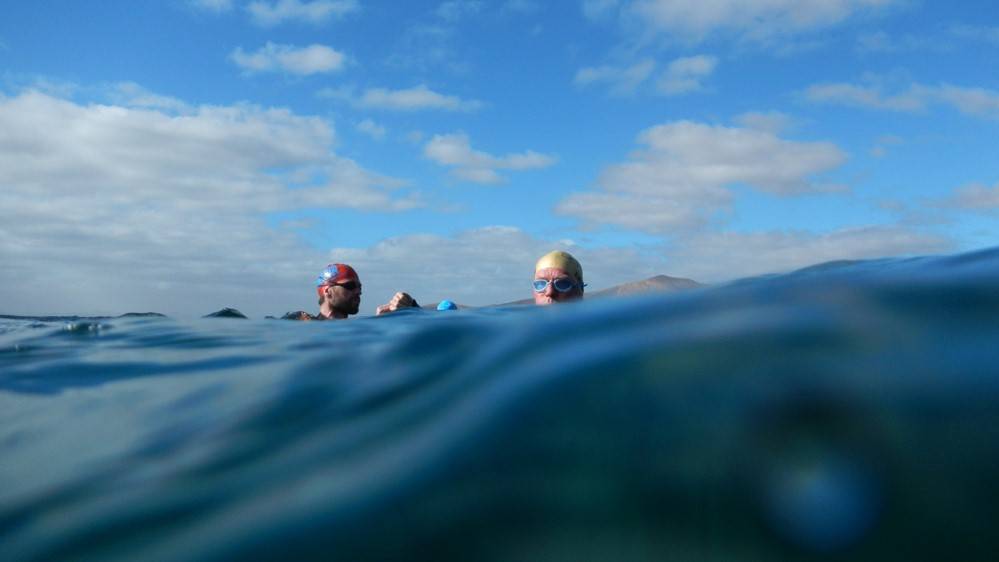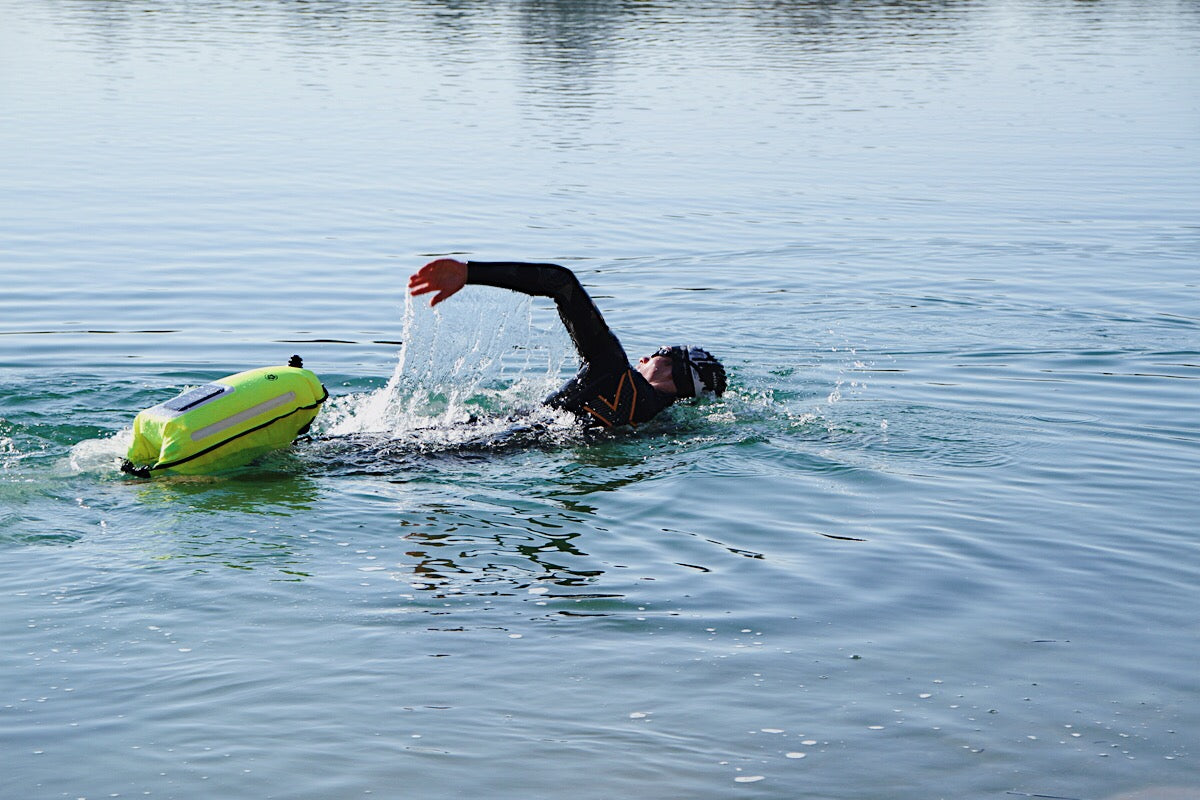Swimming in a natural body of water is very different from swimming in an indoor or outdoor pool. Instead of properly following a track, you have to set the course yourself and hold it. In the greenish-brown water you can only see an arm's length away and you really don't want to know exactly what is lurking beneath you. We still think: don't be afraid of monsters!
If you observe the following rules, nothing stands in the way of training in natural water:
Ensure security
Never train alone in open water. If you don't have a fellow swimmer, you should have at least one person watching you from the shore. If necessary, they can provide help or communicate. A brightly colored swim cap should be worn to be visible.
Stay calm and relaxed
A lot of what scares you in the water is irrational. It often helps to take a closer look at the body of water in which you want to swim and to familiarize yourself with it. It's enough to splash around in the shallow water near the shore or just let yourself drift. The Neo provides buoyancy, keeps the body on the surface and doesn't let you sink. It is important to stay calm and relaxed. A training partner provides additional security when exploring together.
Anyone who swims without neoprene or would like additional protection can equip themselves with a “restube”, for example. This small, collapsible lifebuoy is carried in a pocket on the body and can be quickly inflated with a CO2 cartridge in an emergency. With the swimming aid you can stay afloat until help arrives.
Avoid hypothermia
If the water is cold, the first step is to bring it up to operating temperature. A warm-up program on the bank protects you from cooling down too quickly. You should go into the water slowly to get your body used to the cold. If the neo is initially slightly open, water can enter, which is warmed by body temperature. As a result, the important insulating layer between the body and the neo is formed more quickly. If the water temperature is below 15°C, gloves, socks and a hood should also be worn. Minimize time in the water. If it's not that cold, two bathing caps on top of each other are usually sufficient. Pulled up to the swimming goggles, they offer protection for the forehead. Because if it cools down, you can quickly get a headache. The ears must also be protected as far as possible from the ingress of water. It is important to pay attention to the signs of hypothermia. If you feel shivering, feel cold, tired and dizzy, or in the worst case, disorientation and circulatory failure, you should get out of the water immediately and warm up.
use landmarks
Distinctive points on the shore can be targeted for orientation. In order not to lose sight of these and other swimmers in the water, you should look up every five to six strokes. The water ball crawl, where you can lift your head out of the water and look ahead, can help. With special exercises, straight swimming and a sense of direction can be improved. In addition, bilateral breathing should be practiced. This allows you to orientate yourself on the shoreline on both sides.
Provide perspective
It is recommended to wear swimming goggles with tinted lenses. Reflections and reflections in the water are reduced by the tint and the view is not impaired as much. In addition, the eyes are protected from bright light and UV rays.
And who knows, maybe the sea monster you suspect in the water is actually just a mermaid preparing for the next competition.




















